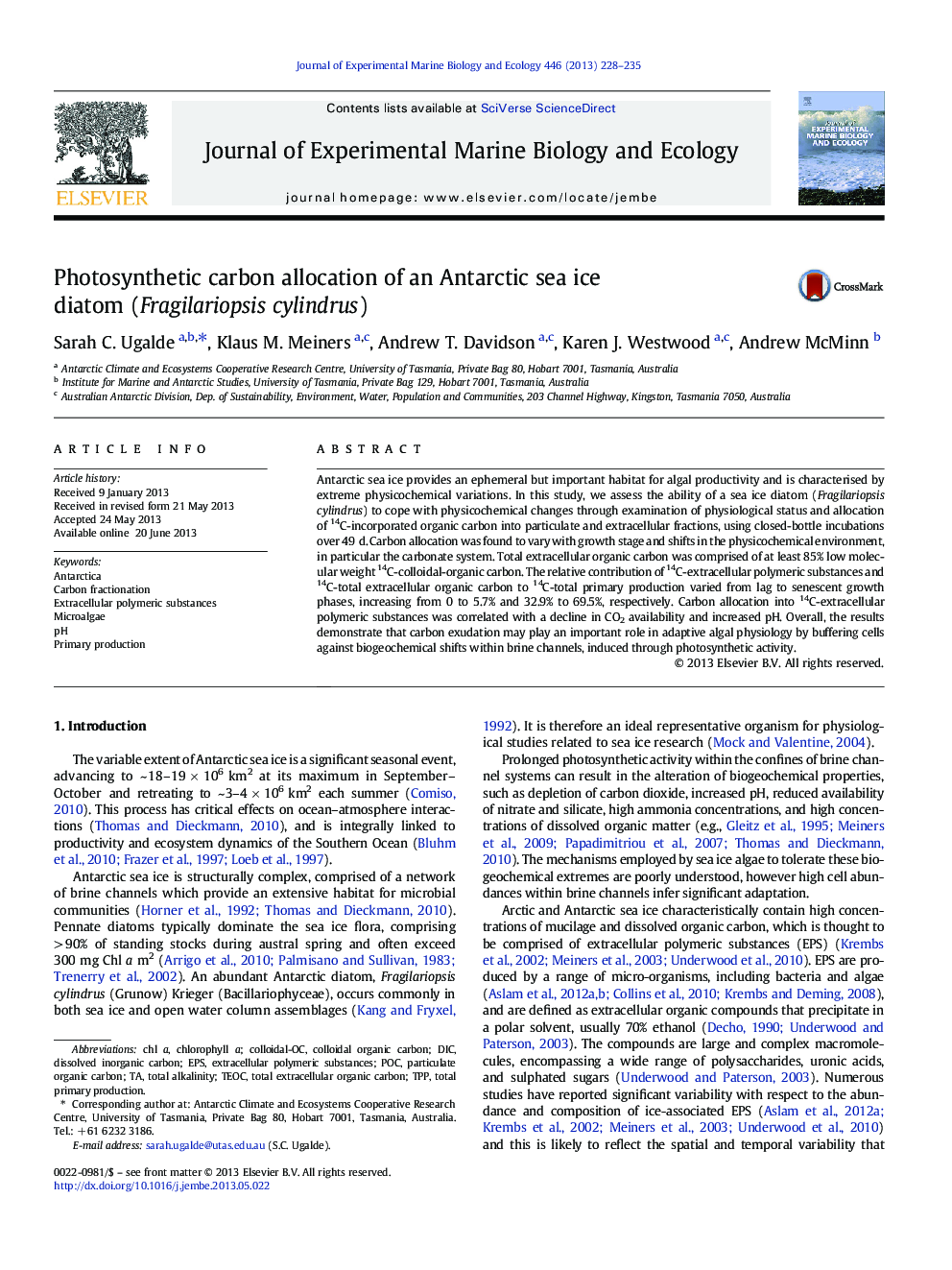| Article ID | Journal | Published Year | Pages | File Type |
|---|---|---|---|---|
| 4395726 | Journal of Experimental Marine Biology and Ecology | 2013 | 8 Pages |
•Cells exude 33–69% of photoassimilated carbon into extracellular organic carbon.•Carbon allocation among exudate fractions varies with physiological state.•EPS production increases as cell physiological status declines.•Carbon allocation is influenced by changes in carbonate chemistry.
Antarctic sea ice provides an ephemeral but important habitat for algal productivity and is characterised by extreme physicochemical variations. In this study, we assess the ability of a sea ice diatom (Fragilariopsis cylindrus) to cope with physicochemical changes through examination of physiological status and allocation of 14C-incorporated organic carbon into particulate and extracellular fractions, using closed-bottle incubations over 49 d. Carbon allocation was found to vary with growth stage and shifts in the physicochemical environment, in particular the carbonate system. Total extracellular organic carbon was comprised of at least 85% low molecular weight 14C-colloidal-organic carbon. The relative contribution of 14C-extracellular polymeric substances and 14C-total extracellular organic carbon to 14C-total primary production varied from lag to senescent growth phases, increasing from 0 to 5.7% and 32.9% to 69.5%, respectively. Carbon allocation into 14C-extracellular polymeric substances was correlated with a decline in CO2 availability and increased pH. Overall, the results demonstrate that carbon exudation may play an important role in adaptive algal physiology by buffering cells against biogeochemical shifts within brine channels, induced through photosynthetic activity.
